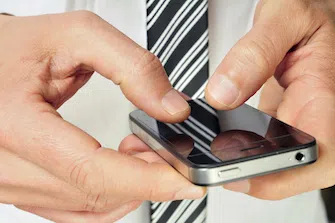As someone who gets dozens of e-mails every day and sends a handful of e-mails every day to get strangers to do things (“digital evangelism”), I offer these insights to help you become a more effective e-mailer.
Craft your subject line. Your subject line is a window into your soul, so make it a good one. First, it has to get your message past the spam filters, so take out anything about sex and money-saving special offers. Then, it must communicate that your message is highly personalized. For example, “Love your blog,” “Love your book,” and “You skate well for an old man,” always work on me. While you’re at it, craft your “From:” line, too, because when people see the “From:” is from a company, they usually assume the message is spam.
Limit your recipients. As a rule of thumb, the more people you send an e-mail to, the less likely any single person will respond to it, much less perform any action that you requested. This is similar to the Genovese Syndrome (or the “bystander effect”): In 1964, the press reported that 38 people “stood by” while Kitty Genovese was murdered. If you are going to ask a large group of people to do something, then at least use blind carbon copies; not only will the few recipients think they are important, you won’t burden the whole list with everyone’s e-mail address. Nor will you inadvertently reveal everyone’s e-mail address.
Don’t write in ALL CAPS. Everyone probably knows this by now, but just in case. Text in all caps is interpreted as YELLING in e-mail. Even if you’re not yelling, it’s more difficult to read text that’s in all caps, so do your recipients a favor, and use standard capitalization practices.
Keep it short. The ideal length for an e-mail is five sentences. If you’re asking something reasonable of a reasonable recipient, simply explain who you are in one or two sentences and get to the ask. If it’s not reasonable, don’t ask at all. My theory is that people who tell their life story suspect that their request is on shaky ground, so they try to build up a case to soften up the recipient. Another very good reason to keep it short is that you never know where your e-mail will end up — all the way from your minister to the attorney general of New York. There is one exception to this brevity rule: When you really don’t want anything from the recipient, and you simply want to heap praise and kindness upon her. Then you can go on as long as you like!
Quote back. Even if e-mails are flying back and forth within hours, be sure to quote back the text that you’re answering. Assume that the person you’re corresponding with has 50 e-mail conversations going at once. If you answer with a simple, “Yes, I agree,” most of the time, you will force the recipient to dig through his deleted mail folder to figure out what you’re agreeing to. However, don’t “fisk” either (courtesy of Brad Hutchings). Fisking is when you quote back the entire message and respond line by line, often in an argumentative way. This is anal if not downright childish, so don’t feel like you have to respond to every issue.
Use plain text. I hate HTML e-mail. I tried it for a while, but HTML is not worth the trouble of sending or receiving it. All those pretty colors and fancy typefaces and styles make me want to puke. Cut to the chase: Say what you have to say in as brief and plain manner as possible. If you can’t say it in plain text, you don’t have anything worth saying.
Control your URLs. I don’t know what’s gotten into some companies, but the URLs that they generate have dozens of letters and numbers. It seems to me that these 32-character URLs have almost as many possible combinations than the number of atoms in the universe — I don’t know how many URLs a company intends to create, but it’s probably a smaller number than this. If you’re forwarding a URL, and it wraps to the next line, it’s very likely that clicking on it won’t work.
Don’t FUQ (Fabricate Unanswerable Questions), 1. Many people send e-mails that are unanswerable. If your question is only appropriate for your psychiatrist, mother, or spouse, then ask them, not your recipient. When I get this type of message, I go into a deep funk: (a) Should I just not answer? But then the person will think I’m an arrogant schmuck; (b) Should I just give a cursory answer and explain that it’s not answerable? (c) Should I carefully craft a heartfelt message probing for more information so that I can get into the deep recesses of the sender’s mind and begin a long tail of a message thread that lasts two weeks? Usually, I pick option (b).
Don’t FUQ, 2. There’s one more type of unanswerable message: the open-ended question that is so broad it should be used in a job interview at Google. For example, “What do you think of the RIAA lawsuits?” “What kind of person is Steve Jobs?” “Do you think it’s a good time to start a company?” My favorite ones begin like this: “I haven’t given this much thought, but what do you think about . . .?” In other words, the sender hasn’t done much thinking and wants to shift responsibility to the recipient. Dream on. The purpose of e-mail is to save time, not kill time.
Attach files infrequently. How often do you get an e-mail that says, “Please read the attached letter.”? Then you open the attachment, and it’s a dumb-shitake Word document with a three-paragraph message that could have easily been copied and pasted into the e-mail. Or, even worse, someone believes that his patent-pending way to sell dog food online means you’ll want to receive his 10-megabyte PowerPoint presentation?
Ask permission. If you must ask unanswerable questions or attach a file, then first seek permission. The initial e-mail should be something like, “May I tell you my background to explain why I’m contacting you?” Or, “May I send you my PowerPoint presentation to explain what our company is doing?”
Chill out. This is a rule that I’ve broken many times, and each time that I did, I regretted it. When someone writes you a pissy e-mail, the irresistible temptation is to retaliate. (And this is for an inconsequential e-mail message. No wonder countries go to war.) You will almost always make the situation worse. A good practice is to wait 24 hours before responding. An even better practice is to never say in e-mail what you wouldn’t say in person. This applies to both the sender and recipient, by the way. The best practice is to never answer and let the sender wonder if his e-mail got caught in a spam filter or didn’t even matter enough to merit a response. Take my advice and do as I say, not as I have done — or will do.



